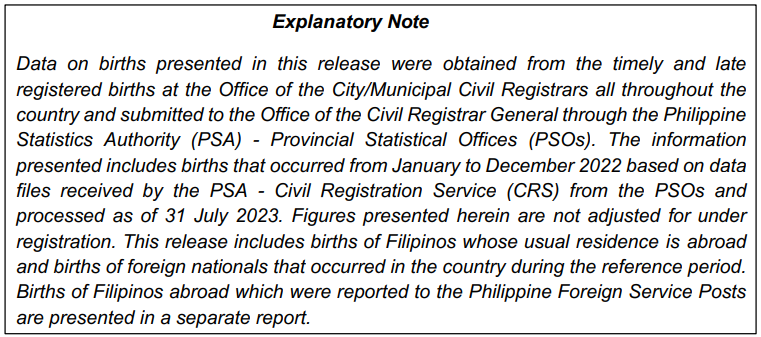
Fifteen births per thousand population
In 2022, a total of 1,177 live births were registered in Laak, which is equivalent to a crude birth rate (CBR) of 15.2 or 15 births per thousand population.
In the past four years, the number of registered live births showed an increase of 14.2 percent from 1,031 in 2019 to 1,177 in 2022. Compared with the number from the preceding year when the pandemic was still prevailing, it indicated an increase of 23.6 percent from 952 in 2021. (Figure 1 and Table 1)
On the average, three (3) babies were born daily in the municipality in 2022. (Table 1)

More males were born than females
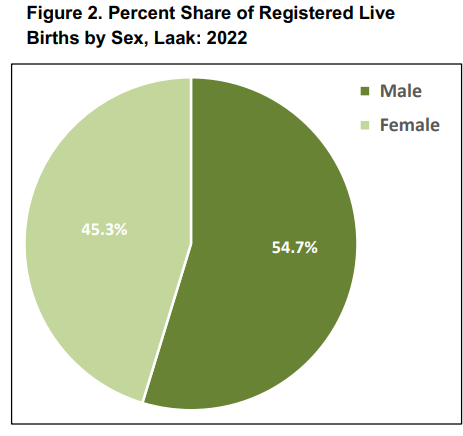
There were more males (644 or 54.7% share) born than females (533 or 45.3% share) in 2022, resulting in a sex ratio at birth of 121 males per 100 females. (Figure 2 and Table 2)
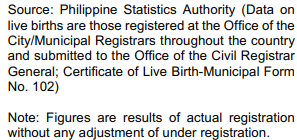
Laak ranked 3rd with the highest occurrence of births recorded
Municipalities with provincial and district hospitals reported the highest number of live births by place of occurrence. Montevista recorded the highest number of birth occurrences with 32.9 percent share, followed by Pantukan (25.3% share).
Laak ranked third both for the highest number of live births by place of occurrence and usual residence of mother with 10.3 percent and 11.6 percent shares, respectively. (Figure 3 and Table 2)

Most number of births registered in November
In 2022, most registered births occurred in November at 119 or 10.1 percent of the total births in the municipality. It was followed by the months of October (9.6% share) and January (9.1% share). On the other hand, the month of March had the least number of births (5.4% share). (Figure 4 and Table 3)
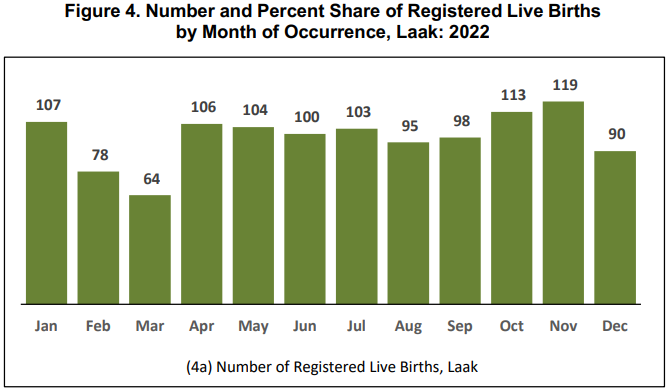
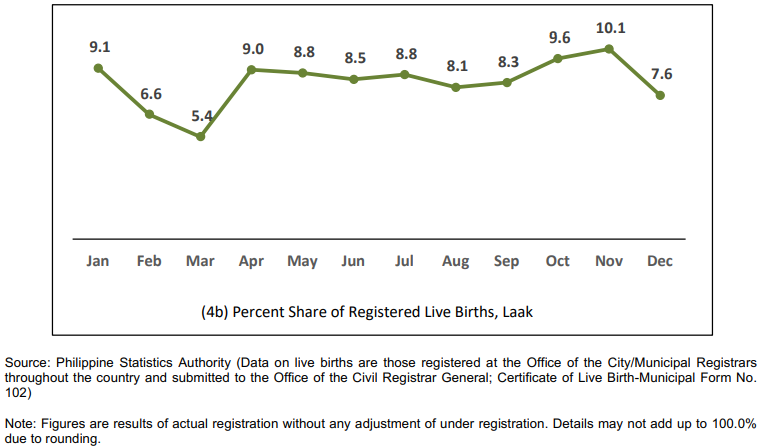
In terms of daily average, the month of November also recorded the highest with an average of four (4) births per day. On the contrary, March had the lowest average with two (2) births daily. (Table 3)
87 in 100 birth deliveries were medically attended
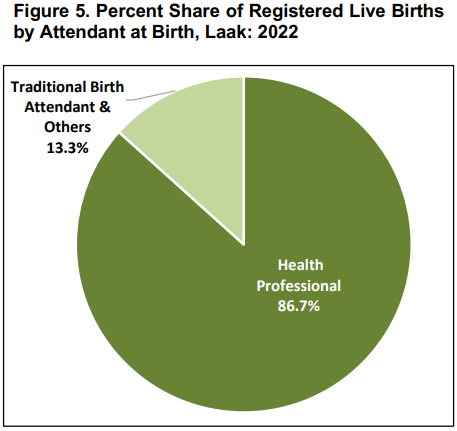
Of the total number of births in the municipality, 86.7 percent were attended by health professionals (physician, midwife, or nurse). The remaining 13.3 percent of births were still delivered by hilot/ traditional birth attendants and others. (Figure 5 and Table 4).
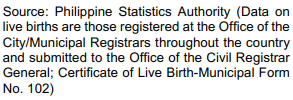
The number of births by place of occurrence and by usual residence of mother showed a remarkable proportion of births attended by health professionals in 11 provinces. This is indicative of improving health services in terms of maternal and child health care.
Ten municipalities had medically attended births higher than the 90.0 percent, of which Nabunturan recorded the highest at 100 percent. On the other hand, only Laak had births that were medically attended below 90.0 percent, at 86.7 percent. (Table 4)
87 in 100 births delivered in health facilities
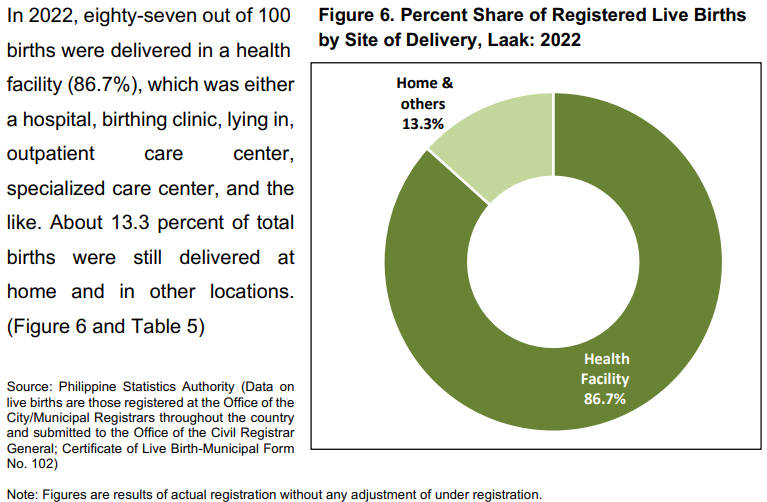
Majority of babies were born to mothers aged 20-24 years old
In 2022, majority of registered births had mothers aged 20-24 years (326 or 27.7%), followed by mothers aged 25-29 years old (20.9%). (Figure 7 and Table 6)
“High-risk” age of pregnancy covers the age group 17 years old and younger, and 35 years old and over (14.4% share). This is because childbearing in these age groups is more likely to have complications during pregnancy and labor that may result in higher morbidity and mortality to both mother and child.
About 19.9 percent of the registered births in 2022 were to mothers aged 19 years old and below. Among the municipalities, babies born to teenage mothers were highest in Laak in 2022.
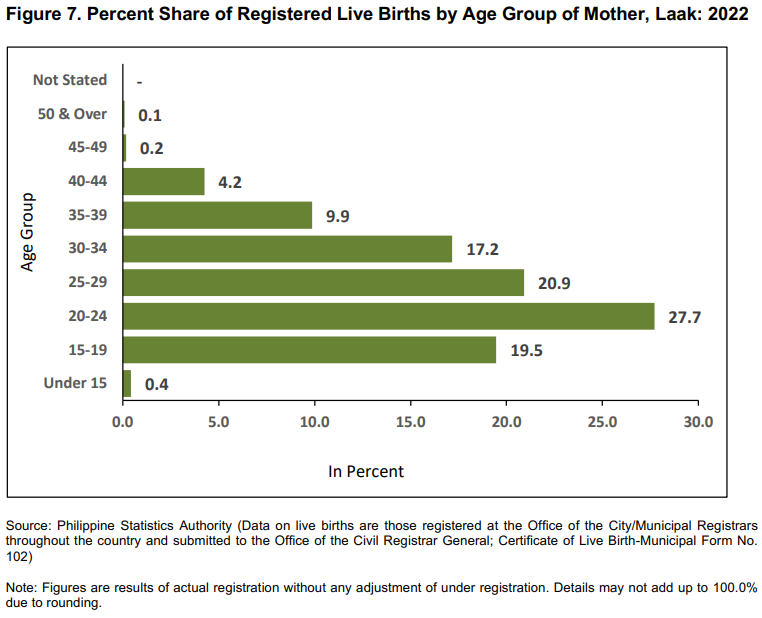
STATISTICAL TABLES

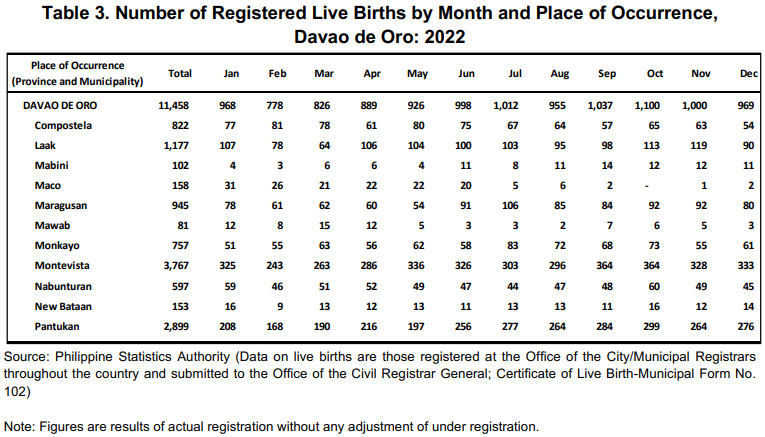
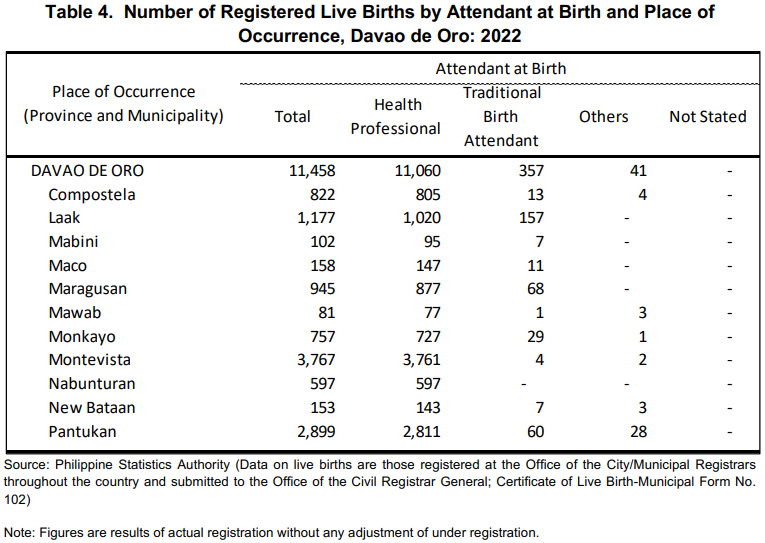
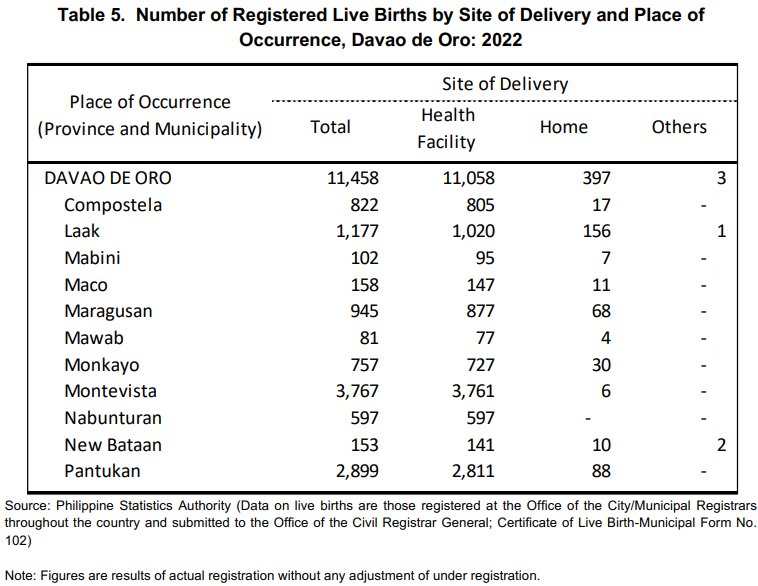
DEFINITION OF TERMS
Civil Registration is defined as the continuous, permanent and compulsory recording of the occurrences and characteristics of vital events, primarily for their value as legal documents and secondly for their usefulness as a source of statistics.
Crude Birth Rate (CBR) refers to the number of live births per 1,000 mid-year population.
Daily average refers to the arithmetic mean of birth occurrence per day.
Health professionals - Accredited health professionals, such as midwives, doctors, and nurses, who have been educated and trained to proficiency in the skills needed to manage normal (uncomplicated) pregnancies, childbirth, and the immediate postnatal period, and in the identification, management, and referral of complications in women and newborns.
Health facility is a place where healthcare services are provided, encompassing a range of institutions and settings dedicated to promoting, maintaining, or restoring health. These facilities can vary widely in size, scope, and services offered, and may include hospitals, clinics, doctor's offices, nursing homes, rehabilitation centers, diagnostic centers, and other healthcare-related institutions.
High-risk age pregnancy refers to pregnancies that occur in women who are either relatively young or older, increasing the likelihood of complications during pregnancy and childbirth.
Live Birth is a complete expulsion or extraction from its mother of a product of conception, irrespective of the duration of the pregnancy, which after such separation, breathes or shows any other evidence of life, such as beating of the heart, pulsation of the umbilical cord has been cut or the placenta is attached; each product of such birth is considered live born.
Place of Registration is the city/municipality where the event is to be registered. Generally, it is the office of the Local Civil Registrar of the place of occurrence.
Place of Occurrence refers to the place where the vital event took place.
Usual Residence refers to the place where the person habitually or permanently resides.
Sex Ratio refers to the number of males per one hundred females.
Teenage mother refers to a female who becomes a parent during her teenage years, typically between the ages of 10 and 19. The term is commonly used to describe a young woman who experiences pregnancy and childbirth before reaching adulthood.
Traditional birth attendants, whether trained or not, are not considered as skilled health personnel.
